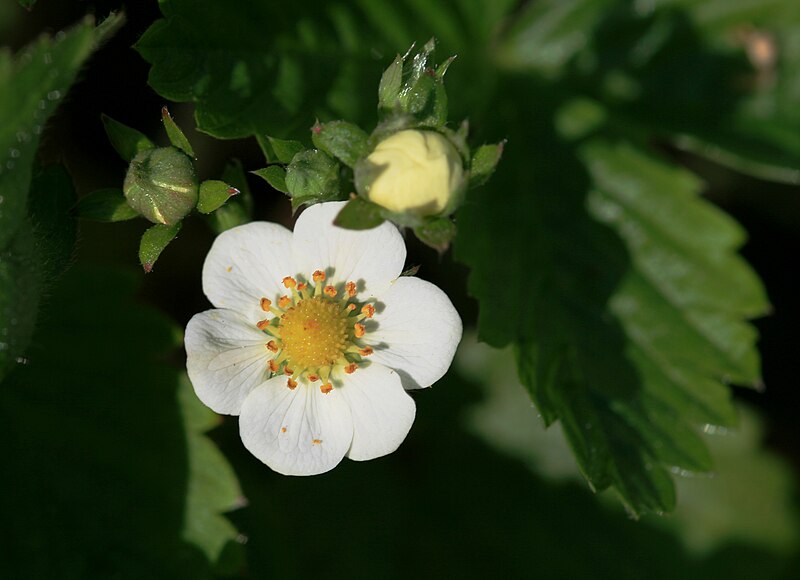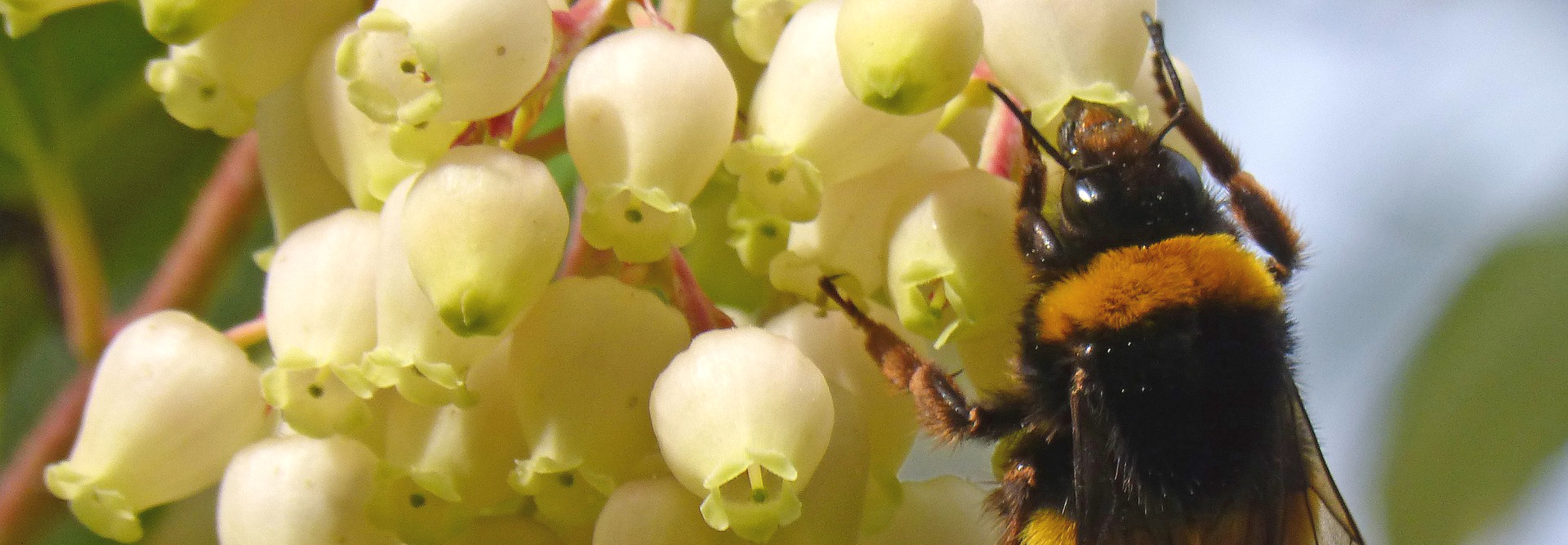The strawberry grows underneath the nettle
And wholesome berries thrive and ripen best
Neighbour’d by fruit of baser quality
(William Shakespeare, Henry V)
Once winter has passed, when the forest awakens and spring is in full force, you come across open areas of woods, undergrowth, meadows, and clearings, an expanse of small white flowers followed by heart-shaped red fruits: the Wild strawberries.
Hidden among the grass and brambles, very sweet and fragrant, in the shape of a scarlet heart, they evoke stories of fairy tales and magic.

The wild strawberry (Fragaria vesca L., 1753) is a herbaceous plant of the Rosaceae family. It is a perennial, acaule plant, with a stem transformed into a short rhizome.
The leaves are arranged in a rosette so that they give the plant the appearance of a small tuft; they are compound leaves, trifoliate, with a serrated margin and a long hairy petiole. They have a large number of stomata on the surface which allow high transpiration. The flowers, white and hermaphroditic, have 4-6 petals that enclose about 20 yellow stamens; they are gathered in groups of 5-11 to form an inflorescence called raceme supported by an erect and hairy peduncle, which rises above the leaves.

What we commonly consider fruit, the strawberry, which we and many forest animals are fond of, is actually a false fruit and is made up of the floral receptacle which grows and becomes succulent. The actual fruits are instead the achenes, i.e. those small yellow and hard formations, scattered on the surface, which instead contain the actual seed. Strawberries ripen between May and August. Greenish-white at the beginning, as they continue to grow they become red when ripe and, when erect, increasing in weight, they fold downwards giving the plant its characteristic shape.

Photo by IVAR Leidus CC BY-SA 4.0
Strawberries are rich in nutrients, and contain polyphenols, mucilage, folic and salicylic acid, vitamin C, and numerous mineral substances; they have purifying, diuretic, and antirheumatic effects.
The roots are fasciculated and have the function of absorption and storage of reserve substances as does the rhizome.

Photo by Xulescu_g, CC BY-SA 2.0
As already mentioned, the wild strawberry finds its ideal habitat in sparse open woods of broad-leaved and coniferous trees, in the undergrowth, but also on the edge of the forest. It prefers moist, humus-rich acid soils and semi-shaded or sunny areas. If it doesn’t receive enough light, it still survives without producing fruit.
It is a resilient and resistant plant, so it is not difficult to find it along beaten paths, at the edges of roads, or on dry stone walls. It colonizes with great ease landslides, as long as they are rich in humus and nitrogen, and areas affected by fires which, if small, it manages to survive and regenerate. It can therefore even be considered a pioneer species.

By these characteristics, evolutionary history has led the species to develop different reproductive strategies: it can reproduce both gamically (sexually) and agamicly (asexually).
Gamic reproduction occurs through the pollination of flowers and the production of seeds. Pollination can be anemophilous, i.e. thanks to the action of the wind which transports the pollen grains, or entomophilous through the incessant work of bees and other pollinating insects. This type of reproduction ensures the genetic variability of the species and improves its ability to adapt.

Durante la stagione estiva, le piante di fragole attuano una differente modalità di riproduzione: iniziano ad emettere gli stoloni, particolari steli orizzontali che crescono in lunghezza dalla base del fusto e che, sui nodi, sviluppano nuove piantine identiche alla pianta madre della quale sono di fatto cloni.

The stolon, almost like an umbilical cord, allows the passage of water and nutrients from the mother plant to the new shoot until the new plant, placed on the ground, produces its roots and takes root naturally. This is an asexual reproduction strategy that many plant species, not only strawberries but also above all plants considered ground cover, exercise to multiply and rapidly colonize the surrounding soil and be competitive in space.

The seedlings thus generated in variable numbers from the mother plant tend to occupy all the space available with a progressive thickening, forming that thick carpet of flowers, leaves, and fruits, which arouses amazement and wonder in us, when from Spring to Summer we have lucky enough to meet him during our walks.
Credits
Maria Beatrice Lupi is a naturalist and expert in training, planning for sustainable development, participatory methodologies, and European planning. Currently, she is involved in dissemination and education for sustainability.
Translation by Maria Antonietta Sessa




